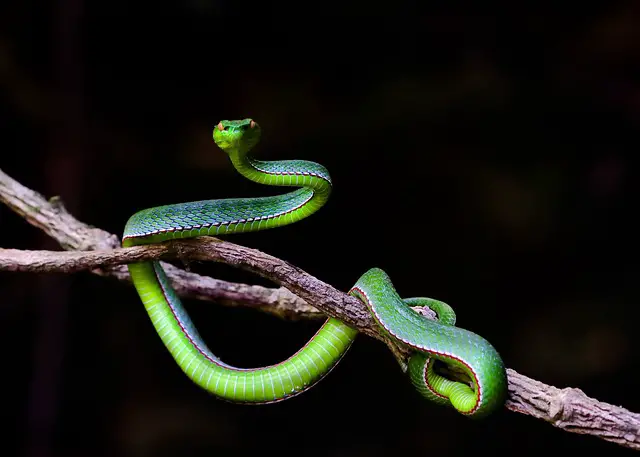Many of us imagine snakes chasing us from movies and books if we run away from them. But is this true? Do snakes chase people? Well, it turns out the answer is a bit complicated. So let’s consider whether you should expect to be chased by a snake if you try to make a getaway.
Do snakes chase you if you run?
The question of whether snakes actively pursue humans is common, with some believing that they will suddenly bolt after those who enter their territory.
The truth is that snakes are instinctively wary of any potential threats and will usually remain motionless until sensation tells them otherwise.
In most cases, if you’re running away from a snake, it’s because it sensed your presence first, not because it’s chasing you.
While there have been some stories of wild snakes being aggressive towards humans, such occasions are relatively rare, and the likelihood of an ‘angry’ snake coming after you is slim to none, so don’t panic if you happen to stumble upon one – stay calm and back away slowly.
Do Snakes Chase Humans?
The short answer is NO.
Snakes have, for centuries, been the subject of common myths and misinformation.
One such myth is that snakes actively pursue and even attack humans. Truthfully, snakes are much more likely to flee than to confront a human being. After all, physical confrontation with an animal many times its size can be dangerous and even fatal to these creatures.
That said, there are certainly instances in which humans may inadvertently antagonize or otherwise bother snakes into taking defensive measures or when an overly-agitated snake feels as if it is under direct threat and must flee or fight to survive.
In any case, however, one should never approach or interfere with a wild snake without proper knowledge and training on handling these animals safely and humanely.
The exception to the rule
However, there are some exceptions to this rule. Some species of snakes—including cobras and mambas—are more aggressive than others and may attack humans if they feel threatened or cornered.
Therefore, hikers and outdoor adventurers must know their surroundings when exploring areas with known snake populations.
It’s also important to note that baby snakes can sometimes be more aggressive than adults due to their lack of experience dealing with threats from humans.
In addition, some male snakes can become territorial during mating season, which can result in them actively pursuing anything that gets too close to them (including humans).
These rare instances usually occur only when humans surprise or startle the snake in question.
Can a human outrun a snake?
Humans have a clear advantage in running; their two legs can propel them for long distances in much less time than a four-legged snake.
We are particularly well-suited to sprinting events, but this doesn’t necessarily mean humans can outrun a snake over any terrain – that would depend on the topography, species of snake, and athleticism of the human in question.
Over short distances, studies suggest that a fit human being can cover 100 meters in under fourteen seconds, while some elapid snakes (like cobras) can go slightly faster than this.
However, since snakes stop and rest much more frequently than humans do if the human could keep running (or even jogging), they’d eventually leave the snake far behind.
Although it largely depends on the context and variables at play, a human has enough speed and endurance in many cases to outrun even the fastest of slithering serpents.
When running away from a snake, what pattern should I run in?
When running away from a snake, it’s essential to avoid zigzagging in an attempt to confuse it.
While this may seem like a good idea in theory, it makes you more prone to tripping and allows the snake to catch up.
The best movement pattern is along parallel axes, as this allows you to progress quickly in one direction.
Straight lines or curving pathways are appropriate for running away from a snake; however, be sure not to make unpredictable turns that the snake may follow.
Faster speed can provide greater distance between you and the snake; if possible, use short bursts of increased speed as needed – make sure your movements remain straight and predictable.
Conclusion
To sum up, snakes generally don’t chase after people—unless they’re startled or feel threatened. So while hikers and outdoor adventurers need to watch out for any potential danger posed by wild snakes, you don’t need to worry too much about being chased by one if you start running away.
With knowledge comes confidence, so understanding how different kinds of snakes react can help you feel more secure when exploring nature alone or with friends and family members who share your love for the outdoors.




